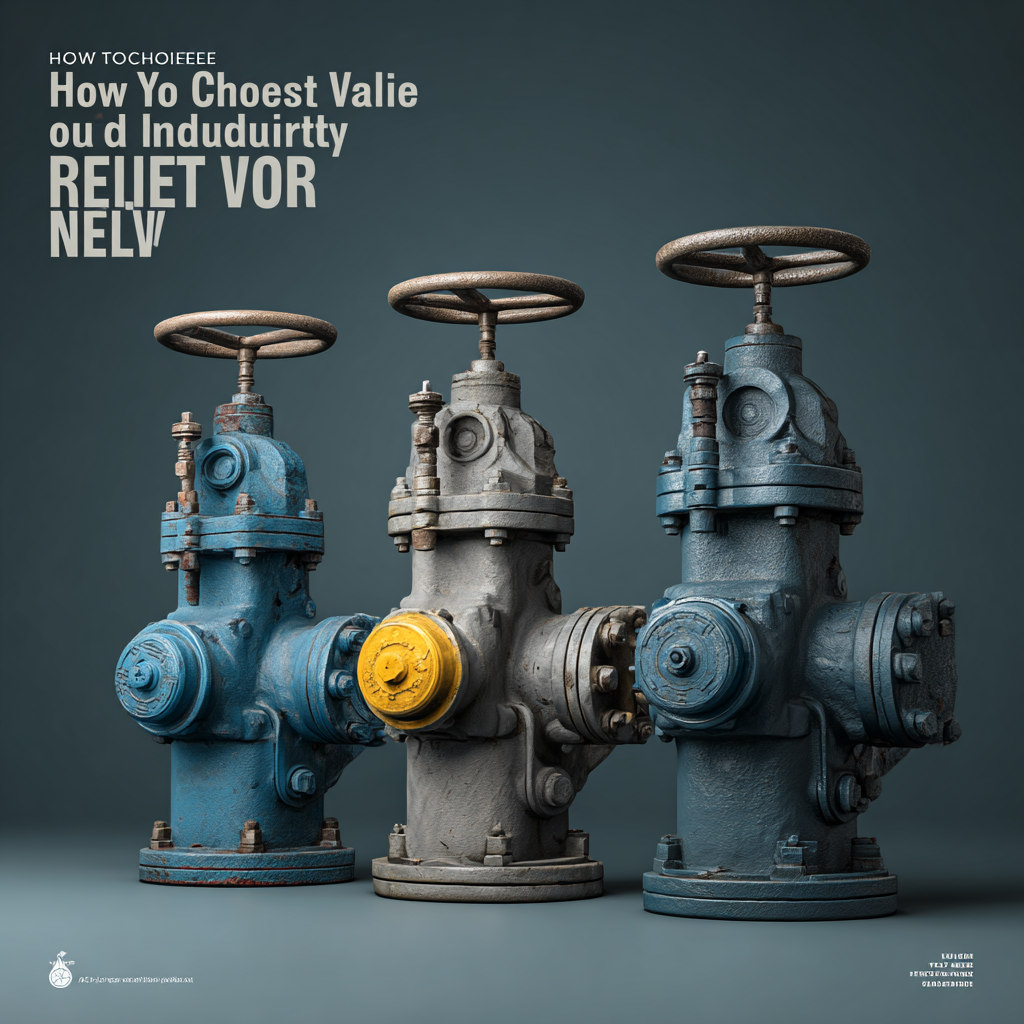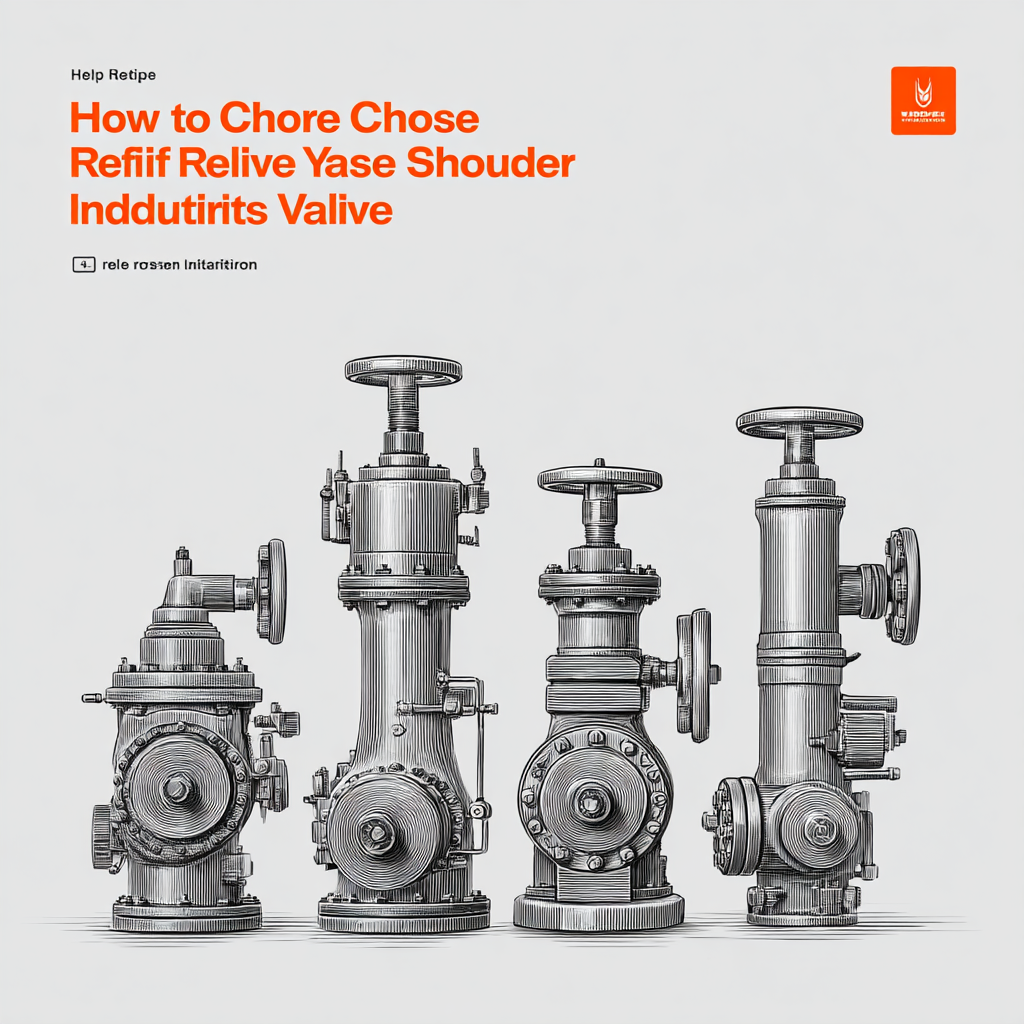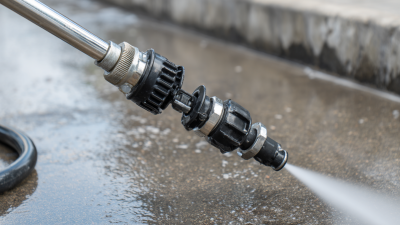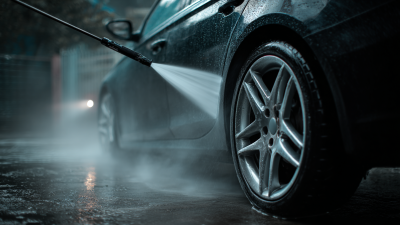How to Choose the Right Relief Valve for Your Industrial Needs
In the highly specialized field of industrial safety, the selection of an appropriate relief valve is critical for ensuring operational efficiency and compliance with safety standards. According to a report by the American Society of Mechanical Engineers (ASME), improper selection of relief valves can lead to catastrophic failures, costing industries millions in damages and lost productivity. With the growing complexity of industrial systems, understanding the nuances of relief valve types—such as spring-loaded, pilot-operated, and ultra-low differential—has never been more vital.
Renowned relief valve expert Dr. Samuel Phillips emphasizes the importance of choosing the right valve for specific applications, stating, "The performance and reliability of a relief valve directly impact the safety and efficiency of an industrial process." As various industries, including oil and gas, chemicals, and pharmaceuticals, continue to evolve, organizations must prioritize rigorous evaluation criteria for their relief valve options. This not only mitigates potential hazards but also optimizes cost-effectiveness and operational performance in the long run.
In light of these considerations, this guide aims to provide a comprehensive overview of factors that should influence the choice of relief valve, assisting engineers and decision-makers in navigating the complexities of this essential safety component. Understanding the industry standards and leveraging expert insights will empower businesses to make informed choices that align with their specific industrial needs.

Understanding the Functionality and Importance of Relief Valves in Industry
 Relief valves play a crucial role in ensuring safety and efficiency in various industrial applications. They are designed to automatically release pressure from a system when it exceeds predetermined levels, thereby preventing potential equipment failures or catastrophic accidents. Understanding the functionality of relief valves is essential for industries such as oil, gas, power, and chemicals, where high-pressure systems are commonplace. The increasing emphasis on stringent safety regulations and the drive towards automation has further underscored the importance of these safety devices.
Relief valves play a crucial role in ensuring safety and efficiency in various industrial applications. They are designed to automatically release pressure from a system when it exceeds predetermined levels, thereby preventing potential equipment failures or catastrophic accidents. Understanding the functionality of relief valves is essential for industries such as oil, gas, power, and chemicals, where high-pressure systems are commonplace. The increasing emphasis on stringent safety regulations and the drive towards automation has further underscored the importance of these safety devices.
As industries globally evolve, the demand for reliable relief valves is steadily increasing. The industrial safety valves market is projected to grow significantly, driven by advancements in technology and heightened awareness of process safety. Regular evaluations of existing facilities and the implementation of new safety standards are becoming paramount, particularly within the context of the liquefied natural gas industry, which is making a significant shift towards more sustainable energy sources. As these trends continue, selecting the right relief valve tailored to specific operational needs will be pivotal in maintaining both safety and operational integrity.
Key Factors to Consider When Selecting Relief Valves for Specific Applications
When selecting a relief valve for industrial applications, there are several critical factors to consider to ensure optimal performance and safety. Firstly, understanding the specific operating conditions, such as pressure range, temperature, and the type of fluid being handled, is essential. According to the American Society of Mechanical Engineers (ASME), relief valves must be capable of handling the maximum expected pressure surge in the system, which can vary significantly across different industries. For example, in the oil and gas sector, relief valves must be rated to withstand pressures exceeding 3000 psi to effectively manage potential overpressure situations.

Another factor is the valve's size and flow capacity. The National Association of Corrosion Engineers (NACE) outlines that a properly sized relief valve can significantly minimize the risk of equipment failure, as undersized valves may not relieve pressure effectively, leading to catastrophic failures. Hence, it’s crucial to conduct a detailed flow analysis, taking into account parameters such as fluid viscosity and density, to select a valve that meets the required flow rate during an emergency scenario. The choice between different valve types—such as spring-loaded, pilot-operated, or balanced—also plays a vital role, depending on the application’s specific needs and regulatory standards.
Comparing Different Types of Relief Valves: Pros and Cons
When choosing the right relief valve for industrial applications, it’s essential to understand the different types and their respective pros and cons. Conventional relief valves are widely used for their reliability and straightforward design. They effectively relieve excess pressure from systems, thus preventing potential damage and ensuring safety. However, their performance can be influenced by factors such as fluid characteristics and installation orientation, making it crucial to assess the specific needs of your system before selection.
On the other hand, pilot-operated relief valves offer advantages in terms of efficiency and responsiveness. They typically have a higher flow capacity and can be better suited for systems with significant fluctuations in pressure. The trade-off, however, is their increased complexity and potential susceptibility to issues like blockage, which might require more maintenance. Evaluating these attributes against the operational demands of your facility is vital for making an informed decision, ensuring that the chosen relief valve aligns well with your safety and efficiency goals.
Material and Size Specifications: Finding the Perfect Fit for Your System
When selecting the appropriate relief valve for your industrial needs, it is crucial to prioritize material and size specifications to ensure compatibility with your system. The material of the valve must be chosen based on the fluid it will handle; factors such as temperature, pressure, and the chemical nature of the fluid play a vital role. For instance, corrosion-resistant materials like stainless steel may be necessary for harsh environments, while brass or plastic could suffice for less demanding applications. A thorough understanding of the working conditions will guide you in choosing a valve that can withstand the operational stresses and prolong its lifespan.
Size specifications are equally important in achieving optimal performance. An undersized valve may lead to frequent relief operations, resulting in inadequate protection, while an oversized valve could fail to open at the required pressure, exposing your system to potential hazards. It's essential to calculate the correct size based on factors such as flow rate and pressure drop across the valve. Furthermore, consulting with industry standards and manufacturer recommendations can provide guidance in selecting a valve that not only fits your system’s requirements but also enhances overall efficiency and safety.
Maintenance and Safety Standards for Optimal Relief Valve Performance
When selecting a relief valve for industrial applications, understanding the maintenance and safety standards is crucial for ensuring optimal performance. Regular maintenance helps identify wear and tear, which can significantly impact the effectiveness of the relief valve. Operators should establish a routine inspection schedule, focusing on valve seating, spring tension, and gasket integrity. Adhering to manufacturer guidelines regarding maintenance frequency and procedures can prevent unexpected failures and ensure that the relief valves function correctly under pressure conditions.
Safety standards, such as those set by the American Society of Mechanical Engineers (ASME) and the American National Standards Institute (ANSI), provide essential frameworks for the safe operation of relief valves. Compliance with these standards not only safeguards personnel but also protects equipment and facilities. Valves should be tested periodically to ensure they open at their specified pressure settings. Implementing safety protocols, such as proper installation and using suitable materials for the specific application environment, will further enhance the reliability and effectiveness of relief valves in industrial settings.
Relief Valve Performance Metrics
This bar chart illustrates key performance metrics of relief valves, showing critical specifications such as pressure ratings, flow capacity, response time, and temperature range needed for optimal operation and maintenance.
Related Posts
-

Top Strategies for Maximizing the Efficiency of Pressure Relief Valves
-

Unlocking Efficiency: How to Choose the Right Pressure Washer Hose for Every Job
-

The Essential Guide to Understanding How Pressure Relief Valves Work
-

Unlocking the Power of Soft Wash Pumps: The 2023 Guide to Eco-Friendly Cleaning Solutions
-

Unlocking the Power of Pressure Washer Pumps for Optimal Cleaning Efficiency and Performance Insights
-

Top 5 Benefits of Using a Pressure Washer for Efficient Cleaning in 2023